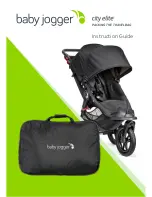
SyxthSense Ltd
Copyright © 2020 SyxthSense Ltd. All rights reserved - 11/2020
PS
CT2.161
- 8/34
Online store:
www.syxthsense.com
Enquiries: T:
+44 (0)1392 875 414
E:
•
One/Two Stage Heating Control
•
One/Two Stage Cooling Control
•
One/Two Stage Heating and One/Two Stage Cooling Control (up to three outputs)
•
One Stage Heating/Cooling Control (Change-Over)
The controller modulates the heating and cooling demand outputs according to the calculated setpoint
and the current temperature. The control can be either P-control or PI-control. The calculated setpoint
consists sum of Nominal Setpoint (nSP) and the user setpoint adjustment (SPA).
As default for SRC-700/701, heating stage 1 output is linked to Y2 for modulating 0..10Vdc control,
cooling stage 1 is linked to analogue output Y3. With SRC-702/704H, heating stage 1 is linked to DO1
PWM control and cooling stage 1 is linked to DO2 PWM control.
It is possible to set the control loop outputs to direct/reverse, which reverses the control output (valve)
running direction (valve drives from 100% to 0%). This can be configured individually for each stage in
the Configuration Parameters.
CONTROL
OUTPUT
HEATING
STAGE 1
COOLING
STAGE 1
calcSP
SRC600/601/602 - 0..10Vdc
SRC602 - PWM
SRC600/601/602 - 0..10Vdc
SRC602 - PWM
HDz
MEASURED
TEMPERATURE
100%
0%
+
-
COOLING
STAGE 2
SRC600/601/602 - 0..10Vdc
HEATING
STAGE 2
NOTE: SRC600 has maximum of 3 x 0-10Vdc outputs
NOTE: SRC601 has maximum of 2 x 0-10Vdc outputs
NOTE: SRC602 has maximum of 2 x PWM 24V outputs and 1 x 0-10Vdc outputs.
ECO Deadzone
fSP
2°C /
3.6°F
fSP = Frost Setpoint
SRC600/601/602 - 0..10Vdc
HDz = COMFORT Heating Deadzone
CDz
CDz = COMFORT Cooling Deadzone
eHDz
eCDz
calcSP = Calculated Setpoint
Between heating and cooling stage 1 is a ’deadzone’. With P-control in the ’deadzone’ the cooling and
heating loop demand is 0%. With PI-control, if the temperature remains in the ’deadzone’ for a
prolonged period, the heating/cooling demand ramps to 0%. The ’deadzone’ allows the temperature to
fluctuate around the setpoint without heating or cooling valves starting to open. The SRC has a built-in
lock that prevents cooling and heating demands to be on simultaneously.
The ’deadzone’ has an individual settings (HDz and CDz) for both heating and cooling side allowing
asymmetrical setting. E.g. in some cases it is important that the cooling starts to respond faster than
heating when the temperature deviates away from the setpoint.
Note: Conceptually calcSP - HDz is effective Heating Setpoint and CDz is Effective Cooling
Setpoint. For the user it is easier to set and display a single setpoint and the ’deadzone’ limits are set
during the commissioning to provide effective heating and cooling setpoints..
The target temperature is typically adjusted by the user by pressing UP & DOWN buttons. The target
temperature/deadzone is changed in different operating situations as follows;
•
COMFORT MODE; target temperature as adjusted by the user (or via the networked system)
and displayed on the screen. The calculated target setpoint (calcSP) consist of the Nominal Set-
point plus the user adjustment (SPA) set via the screen. The user setpoint adjustment is limited
by the Setpoint Adjust Max/Min settings (as d/-3°).
•
ECO MODE; target Nominal Setpoint remains the same.The user adjustment (SPA) is disabled
and the ’deadzone’ settings are expanded to Night Heating Deadzone and Night Cooling Dead-
zone.
•
OFF MODE; the device controls to Frost Setpoint (fSP). The user adjustment (SPA) is disabled.
NOTE:If activated, the High/low Limit Control shifts the effective target temperature (calculated
setpoint) as required.
Heating / Cooling
Change-Over
The main temperature control loop heating stage 1 and cooling stage 1 can be forced to operate in
heating or cooling mode using the change-over function. The change-over is carried out using digital
input, temperature measurement or over the network. This allows the same pipe works to be used for
both heating and cooling in different seasons.
The change-over function is activated if it is selected for the DI1/RI1/RI2.
With digital input the change-over is activated when the input is activated. Over the network the
change-over can be activated by setting the change-over parameter on.









































